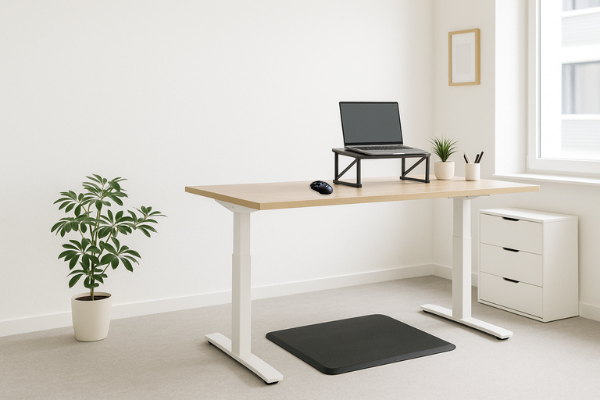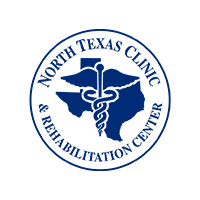Regardless of the type of job you do, your work environment can impact your physical health. Repetitive motions, poor posture, heavy lifting, or even just sitting for too long can lead to chronic pain and preventable injuries. That’s why workplace wellness is more than just a buzzword—it’s an essential part of staying healthy and doing your best at work.
You may think this is only a concern for construction workers and those who do dangerous jobs. Unfortunately, that isn’t the case.
Two of the industries with the highest number of reports for non-fatal injuries are actually healthcare and retail. While this makes sense to your friendly neighborhood chiropractor, it might surprise most people.
So, if you work anywhere, even primarily at a desk, this blog will help you understand what types of injuries can still occur, how to prevent them, and how to promote a culture of workplace wellness.
Common Workplace Injuries and How They Happen
You don’t need to work with dangerous machines to get hurt on the job. Here are a few of the most common workplace injuries that can happen to anybody.
- Lower back pain caused by improper or frequent lifting, standing in one place for many hours, or poor sitting posture
- Neck and shoulder strain from hunching over desks or screens
- Repetitive strain injuries, such as carpal tunnel or tendonitis, caused by typing, swiping products across a scanner, and any other consistent repetitive movements
- Slips, trips, and falls from cluttered or slippery areas, uneven surfaces, or ladders and stools
- Joint pain caused by overuse or awkward movements
Aside from these injuries, prolonged sitting can cause many different issues, including poor circulation, obesity, heart problems, and other chronic conditions.
The worst part about these injuries is that they can creep up slowly, making them more challenging to diagnose and treat.
(If your company carries Workers’ Compensation, it is crucial to see a qualified Workers’ Comp healthcare provider at the first sign of pain or immediately after an injury. That way, your expenses are covered and you don’t have to pay out-of-pocket for treatment.)
However, what’s even better than treating these conditions is preventing them altogether. With the right habit, most people can.

Ergonomics Matters for Workplace Wellness
Workplace wellness starts with setting up your space correctly to support correct posture and reduce the likelihood of pain and fatigue. Whether you’re at a desk or on your feet all day, small changes can make a big difference.
- Keep your monitor at eye level to reduce neck strain.
- Sit with your feet flat, knees at a 90-degree angle.
- Use a supportive chair with good back support that is properly leveled with your desk so that your arms are also at a 90-degree angle at the elbow.
- For jobs where you are on your feet most of the time, wear shoes with proper arch support. You should also consider wearing compression socks, especially if you are prone to swelling or at risk for blood clots.
- For standing jobs, try to stand on a cushioned mat rather than the hard, bare floor.
- Use tools that fit your hand size and are in proper working order to minimize strain.
- Consider wearing a back brace or support belt, especially with frequent lifting and bending over.
Making sure your work environment is well-suited for support can make a huge difference in preventing injuries and strain. If you don’t have the resources you need for a safe working space, talk to your manager about your concerns. (Buying new equipment is usually preferable to dealing with a lawsuit due to unsafe working conditions.)

Take Breaks and Stretch Often
Even when your space is set up exactly to your needs, your body still needs to move. Staying in the same position, whether sitting, standing, or crouching, can cause tightness and fatigue and, eventually, long-lasting injuries.
Develop these new habits, starting today:
- Take a quick walk or stretch every 30–60 minutes. (This is obviously much more difficult if you are a truck driver. When possible, try to stop for a quick break and walk around every 2-3 hours.)
- Do shoulder rolls, neck stretches, forward bends, and reach for the sky—all doable from your chair while reading emails.
- Stand up and do simple mobility exercises during phone calls or meetings.
- Set a reminder to move if you lose track of time.
- For standing/on-your-feet jobs, stretch your calves and quads along with your upper body.
Stretching and moving around keep your joints mobile, improve circulation, and help you stay focused and alert.

Lift Smart to Avoid Injury
If your job includes lifting, learning safe lifting techniques is crucial for workplace wellness.
- Bend at your knees, not your waist.
- Keep the object close to your body.
- Engage your core and avoid twisting.
- Use equipment like carts or lifting belts when needed.
- Lift with a buddy for heavier or more awkward items.
Even if you’ve lifted something a hundred times before, one wrong move can cause injury, so always stay mindful.

Workplace Hygiene and Illness Prevention
Staying physically healthy at work also means avoiding common illnesses. Here are a few tips to protect yourself and your coworkers:
- Wash your hands or use hand sanitizer frequently, especially after touching shared surfaces.
- Keep shared equipment clean, including phones, keyboards, doorknobs, and tools, by wiping them down with disinfectant wipes.
- Avoid touching your face, especially your eyes, nose, and mouth.
- Stay home when you’re sick. Coming in sick can spread illness and delay your own recovery.
- Cover coughs and sneezes with a tissue or your elbow.
These habits reduce the spread of colds, flu, and other infections, keeping everyone healthier.
Take Care of Your Body Outside of Work, Too
Workplace habits matter, but what you do outside of work matters just as much. Maintain your strength and stamina and keep your immune system strong to help you stay healthier and more productive at work.
- Stay physically active to keep your heart, lungs, and muscles strong
- Prioritize sleep so your body can recover
- Drink plenty of water throughout the day
- Eat balanced, nutrient-rich meals to fuel your energy and support your overall health
- Take time to manage your stress and care for your mental wellbeing
- Visit your healthcare provider for regular health check-ups, screenings, and vaccinations
- Pay attention to your body: If you’re feeling sick or in pain, take it seriously and get help when necessary to prevent things from getting worse.

Workplace Wellness for Managers: Small Initiatives, Big Results
Managers and business owners play a significant role in promoting workplace wellness. Here are a few ways to support employee health:
- Provide standing desks or ergonomic chairs.
- Offer stretch breaks during long meetings.
- Bring healthy snacks, like fruit and nuts, or outfit a break room with plenty of space for employees to bring and eat their own lunches.
- Host a monthly wellness challenge (such as steps, hydration, etc.) with fun incentives.
- Provide access to a gym or fitness center, either by having one in your building or working with local gyms to offer reduced membership costs.
- Bring in professionals for voluntary on-site health screenings, vaccinations, back massages, yoga sessions, or workshops on posture and injury prevention.
- Lead group stretching or warm-up sessions at the beginning of shifts.
- Encourage and enforce a “stay home when sick” policy.
- Keep hand sanitizer and disinfectant wipes readily available.
Most importantly, frequently check in with your employees and encourage an open-door policy for them to express concerns about their physical and mental health.
Even low-cost efforts can boost morale, reduce absenteeism, and show employees that their well-being matters.

Workplace Wellness Matters
Staying healthy at work is about more than just avoiding injuries and illnesses. It’s about creating habits and environments that help people feel their best.
Whether you’re adjusting your desk setup, lifting smarter, or simply washing your hands more often, small steps can lead to big improvements. And an overall culture of workplace wellness supports both increased productivity and happier employees.
That said, if you’re already feeling the strain of repetitive injuries or back pain, our clinic is here to help. As an experienced and qualified work injury clinic, we can help make sure you get the treatment you need. From posture assessments to personalized treatment plans, we’re committed to helping you stay healthy and injury-free on the job.





